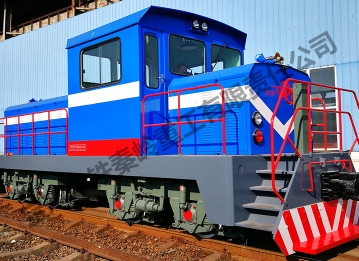In the history of the automobile industry less than one hundred years, there have been many arguments about the automobile engine. When gasoline engine was born, people were full of confidence that a new era was coming, and diesel engine would withdraw from the center of power system history. Now, new energy vehicles again waves, diesel engine's fate when how?
It's all about new energy.
The market for lithium batteries for automotive use will soar to $24.8 billion in 2014, a 214-fold increase from 2008, according to a report. In the face of such a feast, it has become a consensus to seize the opportunity to invest: the whole vehicle enterprises have extended the industrial chain to power battery, and the power battery manufacturers have reverse strategic cooperation with the whole vehicle manufacturers, and the new entrants also want to seek joint venture cooperation in the feast of lithium battery to share the beautiful share. The new round of investment fever has undoubtedly snubbed the already inferior Chinese parts and power system manufacturing, and the industry for repeated construction, the voice of overcapacity is also rising.
In order to deal with the dual pressure of emission reduction and the increasing shortage of oil resources, most countries regard the development of new energy vehicles as the most important way to revitalize the domestic automobile industry and energy conservation and emission reduction, and China and the United States, which have the greatest pressure of emission reduction, become the standard-bearers to promote the development of new energy vehicles. According to China's plan for the adjustment and revitalization of the auto industry, China will have the capacity to produce 500,000 pure electric plug-in hybrid and conventional hybrid new energy vehicles in the next three years. By 2012, 10% of new vehicles will be energy efficient and new energy vehicles, which is undoubtedly a bellwether for the automotive engine manufacturing industry. But the diesel engine, the gasoline engine research and development investment has not benefited in this windvane.
What are the odds of overtaking on a bend?
At present, nickel-metal hydride battery technology is mainly used in hybrid electric vehicles, but some technical properties of nickel-metal hydride battery, such as energy density and charging and discharging speed, have approached the theoretical limit. And lithium battery has the advantages of high energy density, large capacity, no memory, etc., which has been unanimously recognized by automobile manufacturers and battery manufacturers. At present, the focus of research and development of all countries is lithium ion battery. Shen wan's report pointed out that in 2012, the market capacity of nimh power battery will reach 17.5 billion yuan, the market capacity of lithium battery will reach 15 billion yuan, and the global market will reach several hundred billion yuan if nimh power battery accounts for 70%, 25,000 yuan/set, and lithium battery accounts for 30%, 50,000 yuan/set.
To gain access to advanced technology, stable supply of power battery system, accomplished in new energy bus foton, in late October 2009 with the well-known domestic lithium battery production enterprises north leading science and technology industrial investment co., LTD. Set up new energy battery technology co., LTD., Beijing automobile futian automobile investment 10 million yuan, accounting for 10% of the registered capital.
As we all know, compared with gasoline engines, diesel engines are mainly used in some commercial vehicles, ships and rail transit locomotives. China's car market has exploded mainly in passenger cars. Under the general trend of new energy vehicles, the future focus of diesel engine is destined not to be in the field of passenger cars.
Meanwhile, on December 28, 2009, the country's first diesel engine with a liter power (maximum power divided by displacement) of more than 40kW/L jointly developed by yuchai and tianjin university was successfully put into trial operation in yuchai. According to yao minfa, director of the state key laboratory of internal combustion engine at tianjin university, the technological achievements include the following technological advantages: first, low carbon emissions. If put into the actual road passenger transport, each vehicle at least 5 tons of carbon dioxide emissions per year, calculated by 1000 vehicles at least 5000 tons of carbon dioxide emissions per year. Second, energy conservation. The two models include two-stage sequential supercharging and intercooling technology, air intake and exhaust system aerodynamics optimization technology, lightweight and high-strength body structure design technology, combustion optimization control technology and other advanced technologies, to achieve lower fuel consumption, fuel consumption and equipment with large displacement engine with the same type of car reduced by 5%; The emission level meets the emission standards of country 4 and country 5.

